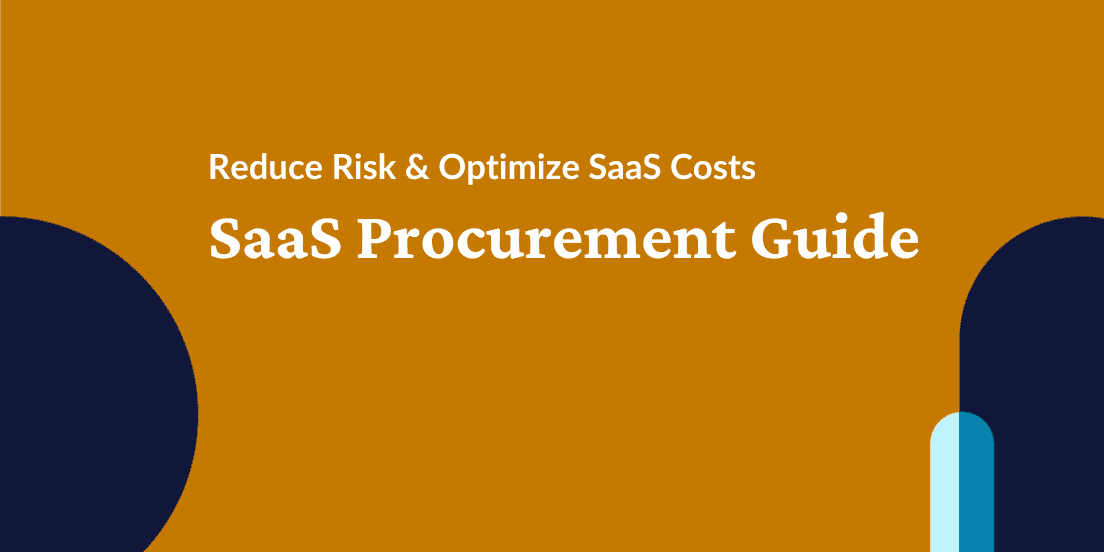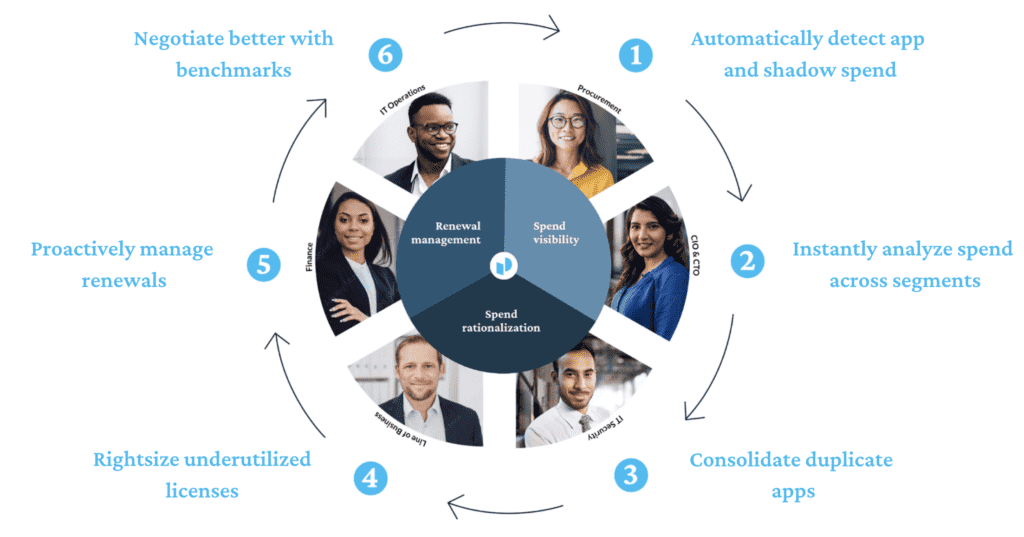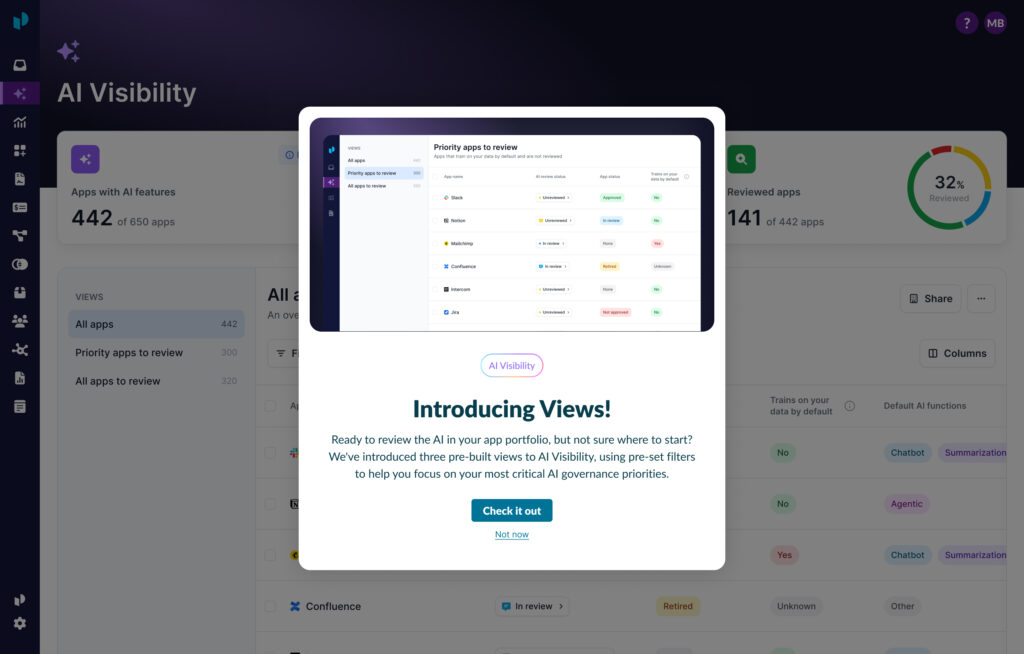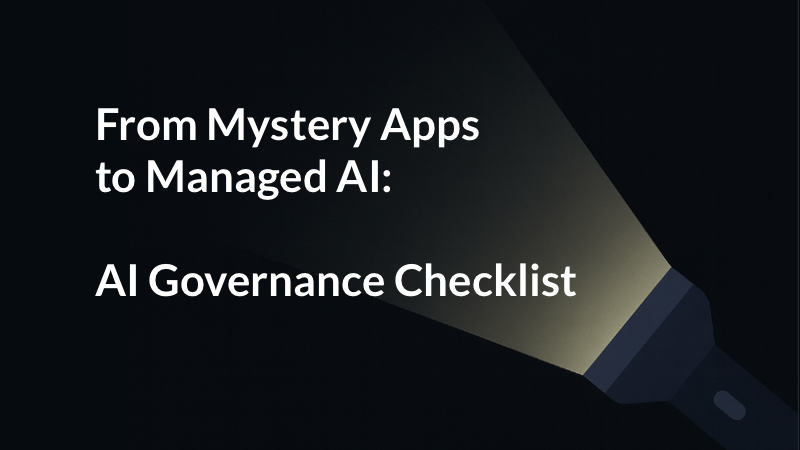
How SaaS Procurement teams can reduce risk and optimize costs
What is SaaS procurement?
SaaS procurement is all about ensuring that businesses are purchasing and renewing the right SaaS (software-as-a-service) tools at the right price. The SaaS procurement process includes selecting an application, assessing its compliance and security standards, and overseeing a successful implementation.
Where teams encounter risk with SaaS procurement
In 2021, 56 percent of SaaS applications were purchased by individual business units. These purchases (also known as shadow IT) are not managed by IT. And, in most cases, will escape Procurement’s notice as well. This not only impedes Procurement and IT’s line of sight into SaaS spend, but it introduces risk considerations as well. Procurement teams will need to increase visibility into their entire SaaS portfolio in order to reduce risk and optimize SaaS costs.
63% of organizations don’t fully understand the risks associated with SaaS procurement
Any unmonitored third party relationship has the potential to expose companies to risk, SaaS apps included. According to research conducted by PwC, only 37% of organizations fully understand the cloud risks associated with third parties.
If this is true when procurement has procedures in place for assessing and monitoring cybersecurity risks with third party vendors, it is only made worse when procurement does not know software licenses have been bought.
49% of cyberattacks are due to shadow IT
One of procurement’s proven strengths is vetting providers before the company makes a commitment to buy. Purchasing software from vendors that have not been vetted by procurement can increase compliance risks. Or worse, it can increase the likelihood of cyberattacks.
Gartner has predicted that shadow IT is responsible for one-third of “resultful” cyberattacks, a data point that Spin.AI validated with their own meta-data analysis. They found that 49% of cyberattacks were due to shadow IT. As disruptive as a cyberattack is to any business, it also represents a source of cost that no Procurement team wants to have to explain to the executive team.
Where can Procurement teams optimize SaaS costs while improving security posture?
Procurement can drive improved SaaS management while also reducing its compliance risks through better management of SaaS applications. Effective SaaS Management starts with discovery and cataloging of all the apps currently in use within the organization. A company’s full portfolio includes SaaS applications that are being expensed (and therefore potentially not visible to procurement) in addition to applications purchased through centrally-managed contracts.
Once that discovery process is complete, Procurement can work with IT to develop a strategy for optimizing SaaS costs, including consolidating dispersed spend in enterprise contracts. Working collaboratively with IT for company-wide benefit provides Procurement with an opportunity to comprehensively assess vendors for cybersecurity risks, mitigating the risks and hidden costs associated with shadow IT.
Provide digital governance for continuous cost optimization to save up to 35%
Improving SaaS governance should reduce SaaS waste and reduce compliance risk, but the sustained efficiency of this work can be vastly improved with the support of a SaaS Management Platform. This also accelerates speed to savings. A platform that enables app discovery and comprehensive spend insights makes it possible to start optimizing costs immediately.
Then the focus can turn to long term value, ensuring that cost benefits and efficiency gains are not a one time benefit, but the start of an ongoing cycle of value. As shown in the following framework, continuous SaaS cost optimization across your entire SaaS portfolio is not only possible, it’s also highly scalable. Using this framework, organizations like Databricks have saved up to 35% on critical SaaS apps.

Download Procurement’s Guide to SaaS Cost Optimization to learn more.
The impact of effective SaaS procurement
Video conferencing leader Zoom was using a 200+ row spreadsheet to manage their SaaS purchases. Now it has a single source of truth that provides SaaS renewal alerts and processes for evaluating and purchasing additional SaaS apps. Zoom optimized its processes with Productiv, and are now in a position to make data-driven purchasing decisions and ROI evaluations. The end goal is a dynamic toolset where departments can easily see SaaS apps that have been blessed by IT. Productiv enables IT to be strategic partners with business groups, helping them recommend and vet technology.Uber’s vision for SaaS Management is to have a dynamic toolset where all departments can review SaaS apps that have already been approved by IT. Once a tool is being used by more than 3 departments, it is considered a “Corporate Tool” — or a resource can be relied upon to deliver real business value without increasing security risks.
About Productiv:
Productiv is the only SaaS Management Platform built for bringing teams together. From new purchase requests to renewals, and everything in between, Procurement, Finance, and IT work in Productiv to align around trusted data, get AI powered insights, collaborate, make smarter decisions, and have confidence in every investment, at scale.
Learn more today.
About Productiv:
Productiv is the IT operating system to manage your entire SaaS and AI ecosystem. It centralizes visibility into your tech stack, so CIOs and IT leaders can confidently set strategy, optimize renewals, and empower employees.





